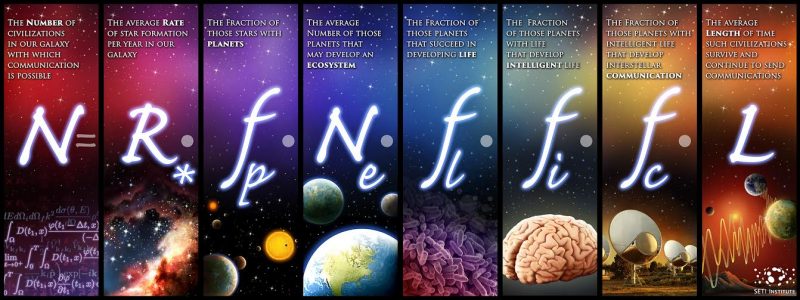
Last week, EarthSky reported on the sun-like star ZTF SLRN-2020, which lies some 12,000 light-years away. And in its process of becoming a red giant star – a stage of stellar evolution that awaits our own sun, too – ZTF SLRN-2020 appears to be engulfing a hot gas giant planet. It’s thought that Earth, too, will someday be engulfed by our sun in this way.
In the article below, astronomer Guy Ottewell discusses ZTF SLRN-2020’s late planet in the context of the Drake equation, which is a speculative equation giving an estimate of the likelihood of discovering intelligent extraterrestrial life in our galaxy. Ottewell points out that the discovery of the late planet could lead toward a firmer estimate of a key factor in the Drake Equation: the number of stars that have planets.
A late planet swallowed by its star
According to modern theories of how stars evolve, stars do eventually swallow their planetary systems. And it’s thought that this will happen to Earth five billion years from now when the sun swells to its red giant phase. For the first time, evidence for the moment of an engulfment has actually been found. A team of 26 astronomers, led by Kishalay De of the Massachusetts Institute of Technology, made the discovery.
ZTF SLRN-2020, a sunlike star, underwent an outburst very like those that happen when binary stars merge. But it was a lower-energy outburst. And so astronomers believe the object with which the star was merging must have been less than 10 Jupiters in size: a planet.
Perhaps the most interesting aspect of this discovery is the evidence they think they can extract for chemical remains of planets inside stars. This could in turn be evidence for the likely number of stars with planetary systems. And this is one of the factors in the Drake equation for the likelihood of extraterrestrial life with which we could communicate.

How the Drake equation came to be
Frank Drake, who died in 2022, was a radio astronomer who pioneered the search for extraterrestrial intelligence. In 1961 he convened a meeting of 10 scientists and other thinkers, the Order of the Dolphin, at Green Bank radio observatory in West Virginia. Primarily, the meeting was to discuss SETI – which stands for the search for extraterrestrial intelligence – and in preparation for it he devised his equation. It suggests that the number of presently existing civilizations in the Milky Way galaxy able and willing to communicate with ours is the product of seven terms:
N = R * fp * ne * fl * fi * fc * L
Properly it’s written in mathematical notation with subscript second letters. But I’m writing it in a simpler way that will be easier for you to refer to.
The meaning of the equation
It means that N, the number of such civilizations, is found by multiplying:
R: the yearly rate at which stars are born in the galaxy. (The guess by Drake and the Order of the Dolphin: 1).
fp: the fraction of stars that have planets. (0.2 to 0.5).
ne: the average number of planets in a planetary system that have life-possible conditions. (1 to 5).
fl: the fraction of those on which life does develop. (1).
fi: the fraction of those where the life evolves intelligence. (1).
fc: the fraction of those where life reaches a technological level at which it can send and receive signals across interstellar space. (0.1 to 0.2).
L: the average lifetime in years of such civilizations. (1,000 to 100,000,000).
Summing up these guesses would result in answers ranging from 20 to 50,000,000!
The late planet and the Drake equation
In fact, the first four terms are becoming closer to being known. Plus, the recent discovery of star ZTF SLRN-2020 – thought to be engulfing its planet – could lead toward a firmer estimate for fp, the fraction of stars that have planets.
Obviously, the overall uncertainty is still enormous.
And there are some who suggest that N may be zero – we are alone – because fl may be close to zero. Meaning several freakishly unlikely coincidences allowed life to arise and survive on Earth. Or maybe that the operative factor is L: advanced civilizations might tend to destroy themselves through nuclear war or failure to deal with pandemics or environmental collapse.
On the other hand, truly advanced civilizations might learn to become indestructible.

Bottom line: Astronomer Guy Ottewell discusses the recent discovery of a star swallowing a planet, in the context of the Drake equation. Guy said he’ll have an entry on the Drake Equation in the new edition of Albedo to Zodiac that he’s preparing.
Read more: A 1st! Star destroys its planet, previewing Earth’s future











